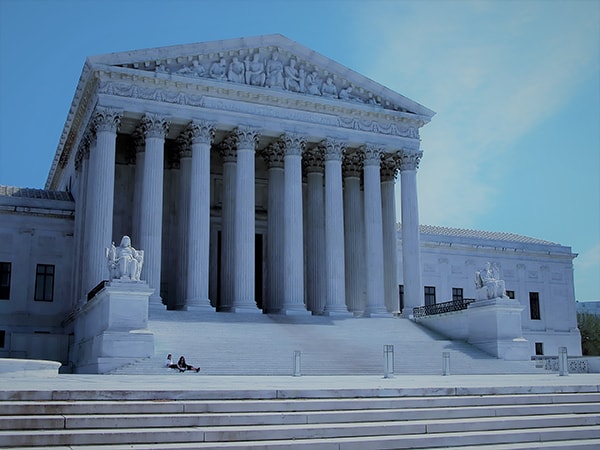Best Federal Appeal Lawyers: Getting Justice in Federal Appeals
Best Federal Appeal Lawyers: Getting Justice in Federal Appeals
Blog Article
Debunking the Refine of Federal Appeals: What You Need to Know
Navigating the intricate realm of government allures can often appear like going across undiscovered waters for those not familiar with the process. Understanding the subtleties of appellate court jurisdiction, the complexities of submitting a notice of charm, presenting a compelling quick, and making a convincing oral disagreement are vital parts that can significantly affect the outcome of a situation. By deciphering the layers of complexity bordering federal charms, individuals can gain a clearer understanding right into the devices that regulate this vital phase of the lawful system.
Comprehending Federal Appeals Process
Looking into the detailed world of the government charms process unveils a organized and systematic trip with the judicial system. Federal appeals act as a crucial mechanism for assessing choices made by lower courts. Understanding this process is crucial for anyone included in lawful procedures at the government level.
The procedure generally starts with a party dissatisfied with a lower court's ruling submitting a notification of allure. This sets off an evaluation by a higher court, where a panel of courts assesses the legal disagreements presented by both celebrations. Briefs describing the lawful thinking behind each party's setting are sent, and oral debates might be heard to clarify complicated concerns.
The appellate court's decision is based on a thorough assessment of the lower court's process and the debates provided. The courts do not concentrate but reconsider realities on whether legal errors took place that affected the reduced court's choice. Once the appellate court reaches a decision, it can attest, reverse, remand, or customize the reduced court's judgment, providing quality and finality to the lawful dispute. Understanding this procedure is important for browsing the complexities of federal allures efficiently.
Appellate Court Jurisdiction Described
Appellate court territory refers to the range of situations that a certain appellate court has the power to assess and decide upon. Unlike test courts that listen to situations for the very first time, appellate courts are limited to reviewing decisions made by reduced courts.
Appellate courts have territory over certain kinds of cases, typically those entailing legal errors, step-by-step issues, or questions of regulation as opposed to valid conflicts. The territory of appellate courts is normally laid out in laws and laws that control the court system. Recognizing appellate court territory is important for parties involved in the charms procedure as it figures out whether a situation is qualified for evaluation and the level to which the appellate court can interfere in the reduced court's decision.
Filing a Notification of Charm
The first action in beginning the federal allures procedure includes submitting a Notification of Charm with the appropriate appellate court. This crucial file officially notifies the court and the various other events associated with the situation that the appealing celebration plans to look for a review of the reduced court's decision. Submitting a Notice of Allure is a stringent procedural requirement that establishes the appellate procedure moving.
When preparing the Notification of Allure, it is important to make sure conformity with the specific rules and guidelines of the appropriate appellate court. federal appeal lawyers. The record needs to generally include information such as the instance name, the lower court's name, the date of the judgment being appealed, and a concise declaration showing the premises for the allure

Rundown and Oral Disagreement
In the appellate procedure, offering created briefs and engaging in dental disagreements play pivotal duties in promoting for the appealing party's setting prior to the appellate court. Briefs are extensive legal records that detail the events' disagreements, lawful authorities, and evaluation supporting their positions. These written submissions give the court with a detailed understanding of the truths of the instance, the relevant regulation, and why the appealing event believes the reduced court's choice need to be overturned.
Adhering to the entry and evaluation of the briefs, oral arguments provide the parties a possibility to more clarify their settings, attend to any type of concerns the appellate courts may have, and highlight essential factors from their composed briefs. Dental debates are a possibility for the lawyers to convince the courts via verbal campaigning for and reactions to queries from the bench.
Both the written briefs and oral disagreements are vital elements of the appellate procedure, enabling parties to present their case thoroughly and compellingly prior to the appellate court. - federal crime lawyer
Obtaining the Appellate Court Choice
The appellate court's choice is normally supplied in a created layout and details the court's verdicts on the lawful issues presented, the thinking behind their decision, and the judgment made. The time frame for getting the appellate court's choice can vary, but courts aim to provide timely resolutions. Whether the appellate court affirms, reverses, or remands the lower court's choice, recognizing the implications of the judgment is important for all celebrations included in the appellate procedure.
Verdict
Finally, the government allures procedure is a complicated yet crucial action in looking for justice. Comprehending the appellate court jurisdiction, filing a notification of charm, preparing briefs, and providing dental disagreements are all vital parts of this process. Ultimately, obtaining the appellate court decision can give quality and resolution to legal conflicts. It is necessary to navigate the government appeals procedure with diligence and focus to detail to achieve a reasonable end result.
As we progress from understanding the federal appeals process to dissecting the intricacies of appellate court jurisdiction, an essential element comes to light relating to the authority and limits of these greater courts in the legal landscape. Appellate court jurisdiction refers to the range of instances that a specific appellate court has the power to determine and review upon. Unlike trial courts that hear instances for the very first time, appellate courts are limited to reviewing choices made by lower courts. Recognizing appellate court jurisdiction is vital for parties included in the appeals process as it determines whether a case is eligible for evaluation and the extent to which the appellate court can intervene in the lower court's choice.

Report this page